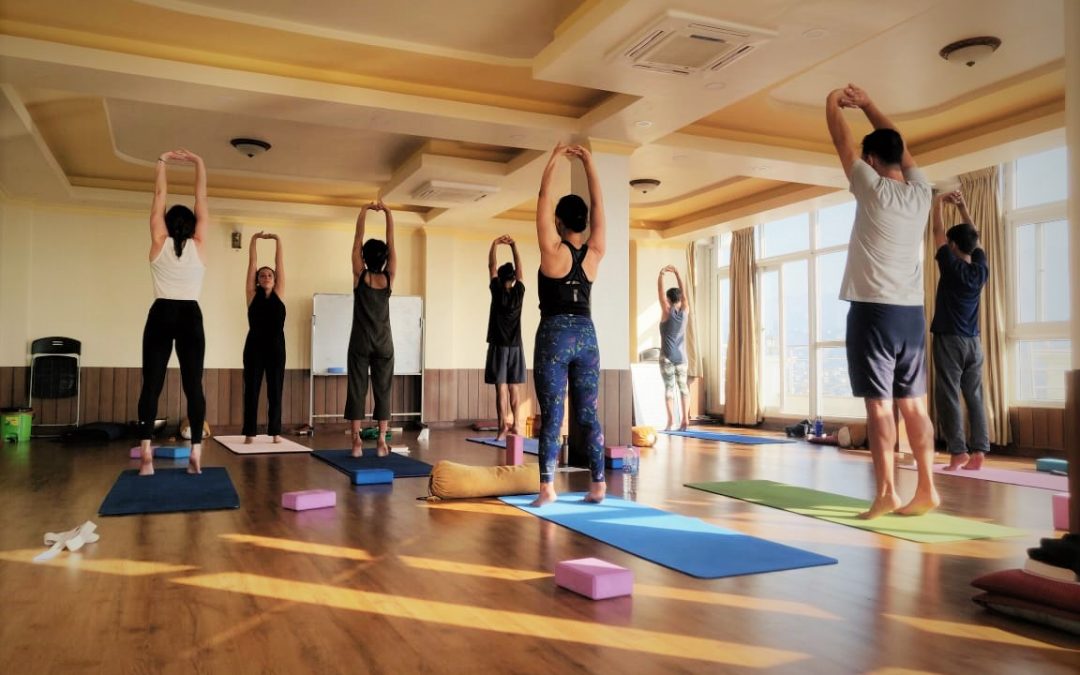
by Tirtha Acharya | Jun 20, 2021 | Yoga
How To Calm Your Mind By Practicing Yoga
Spiritual practices evoke a sense of well-being and help you understand your inner self. One such practice, i.e., Yoga, is quite popular worldwide due to its calming effects. It is the best way to get rid of the fluctuations of the mind and walk towards your true nature. Also, long-term yoga practice encourages your mind to stay still and at peace even during tough times. You can enhance your yoga practice and rejuvenate the mind with some effective techniques. Not only will it improve your concentration levels, but it also allows you to perform yoga asanas properly. This article deals with 5 different ideas on how to calm your mind by practicing the yogic method.
1. Observe Your Breath
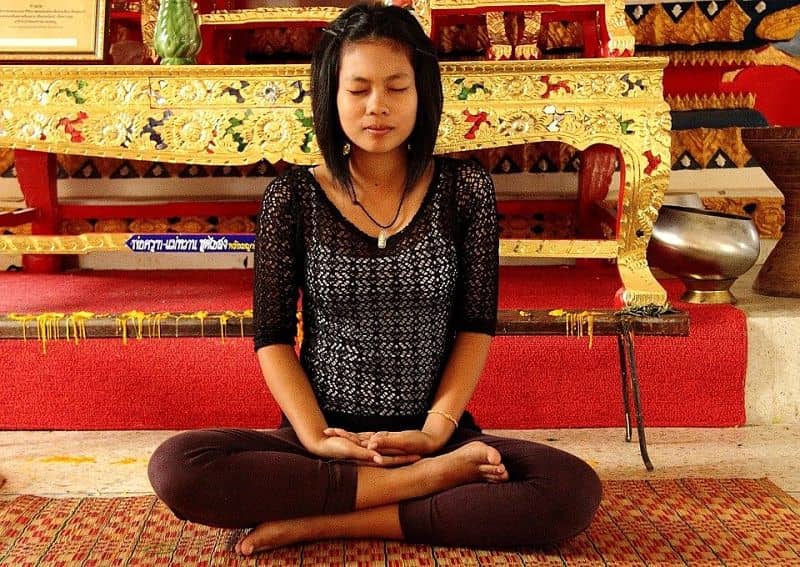
Source
Do you find it challenging to keep your mind off the usual issues related to work and life in general? Yoga practice is effective only when you can focus on the inner self rather than the daily issues in life. You can keep the unnecessary thoughts and reactions at bay with breath awareness techniques. Also, it helps in increasing blood circulation and eases anxiety.
Try the alternate nostril breathing either before or during your yoga practice for maximum rejuvenation. Start by covering your right nostril and breathing in through the left one. Further, hold in the breath and then breathe out through the right nostril. This can prove to be one of the most effective techniques of how to calm your mind.
Repeat the step for at least 15 minutes to experience calming effects. It boosts your ability to concentrate on yoga and limits external distraction. Not to forget, breathwork is always beneficial to calm down a racing heart. You may couple up the yoga practice with some CBD and you can just search a weed store near me if you are looking for some high-quality products.
2. how to calm your mind by Meditation?
If you are thinking about how to calm your mind, spiritual techniques take you closer to the stillness and calming nature of your true self. Apart from yoga, you can couple up the practice with a few minutes of meditation as well. While doing the breathwork, try to stay mindful of each inhaled or exhaled breath.
Also, you need to focus on the slight pause between every cycle of breathing. Such meditative techniques are likely to transform your mind and cease the array of emotions. Yoga-assisted meditation is reliable, provides faster results, and enhances your lifestyle.
Meditation allows you to remain in the present moment and act as a mere observer. That way, you are less likely to experience negative emotions or identify with your bodily identity. Such realizations help bring about mental clarity and silence your mind.
3. Chant Some Mantras
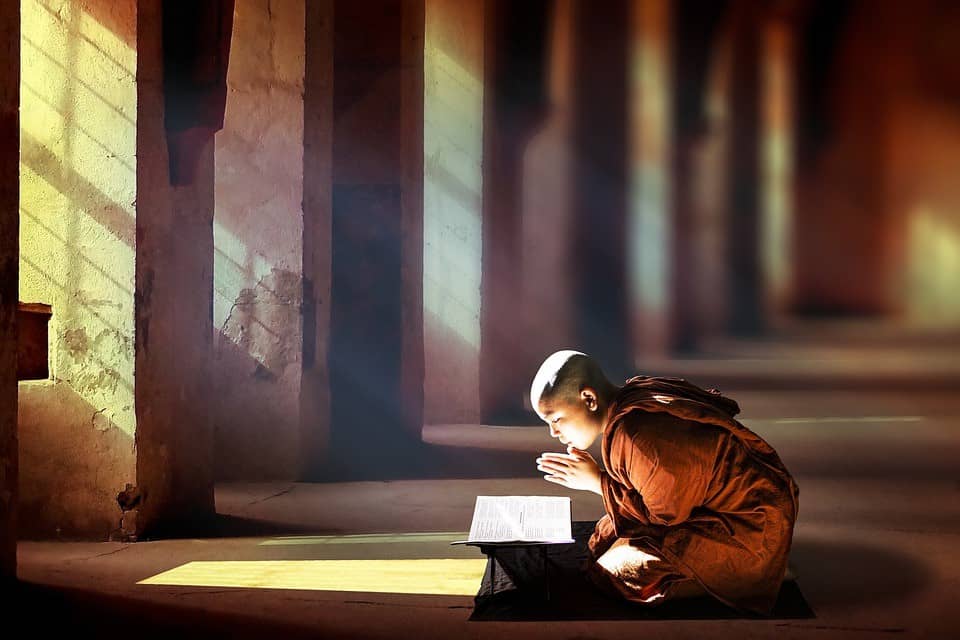
Source
While talking about how to calm your mind, Mantras is the next answer. If obsessive thinking and external distractions hinder your yoga practice, you can try the mantra chanting technique. Try to get a mantra with positive energy and chant it during the yoga sessions.
Also, you can repeat the mantra while doing some house chores or relaxing on your couch. It induces a sense of accomplishment, eliminates unnecessary thoughts, and keeps your mind calm. The best way to do mantra chanting is in the meditation pose with some chanting beads. That way, you can keep a count of the number of repetitions and stay involved in the process.
It is an excellent technique for beginner yogis to focus, reflect, and observe the surroundings. You can get the mantra through a spiritual master or yoga professional. Make sure to start your day with some chanting and practice yoga to clear off your mind.
4. Stay Mindful With Laya Yoga
Another technique to control your mind and observe the surroundings without reacting is laya yoga. Laya means the act of absorption and involves a ringing sound that reaches your ears. Also, you need to observe the sound and relate it to the divine energy of the universe. Allow yourself to connect to the subtle sound and merge with the universal energy through it.
A few minutes of laya yoga can alleviate stress, boost your metabolism, and lead to a still mind. It enables you to merge with the divine energy and realize the illusory nature of the world. All these effects are likely to awaken you and keep you away from distractions.
With laya yoga, you can reduce the signs of stress and anxiety. Before starting the asanas, you can devote a few minutes to this form of yoga for the utmost calmness.
5. Practice Yoga Nidra
Are you aware of the yoga Nidra that awakens your body and allows you to become aware of your inner self? As a yoga practitioner, you can enhance your practice through yoga Nidra. It involves a state between wakefulness and sleep that can take you through the astral dimensions. Also, yoga is likely to increase your spiritual powers and reduce anxious thoughts.
It improves your sleep cycle, detaches you from unnecessary thoughts, and eliminates stress. Try practicing the yoga Nidra before your yoga session or sleep for maximum benefits. As your mind silences, you are likely to achieve a calm and quiet mind.
The Bottom Line
Yoga and meditation are age-old practices to silence a racing heart and an overwhelmed mind. If you’re a beginner in yoga, you must incorporate your yoga practice with other spiritual techniques. Try to include breathwork either at the beginning or during your yoga practice. This is because it increases self-awareness and keeps the external distractions in control.
Other than this, you can try the mantra chanting techniques to distract your mind from the usual troubles. A few minutes of yoga Nidra can eliminate stress and make you stay in the present moment. All these spiritual techniques can enhance your yoga practice and make you aware of your inner self.
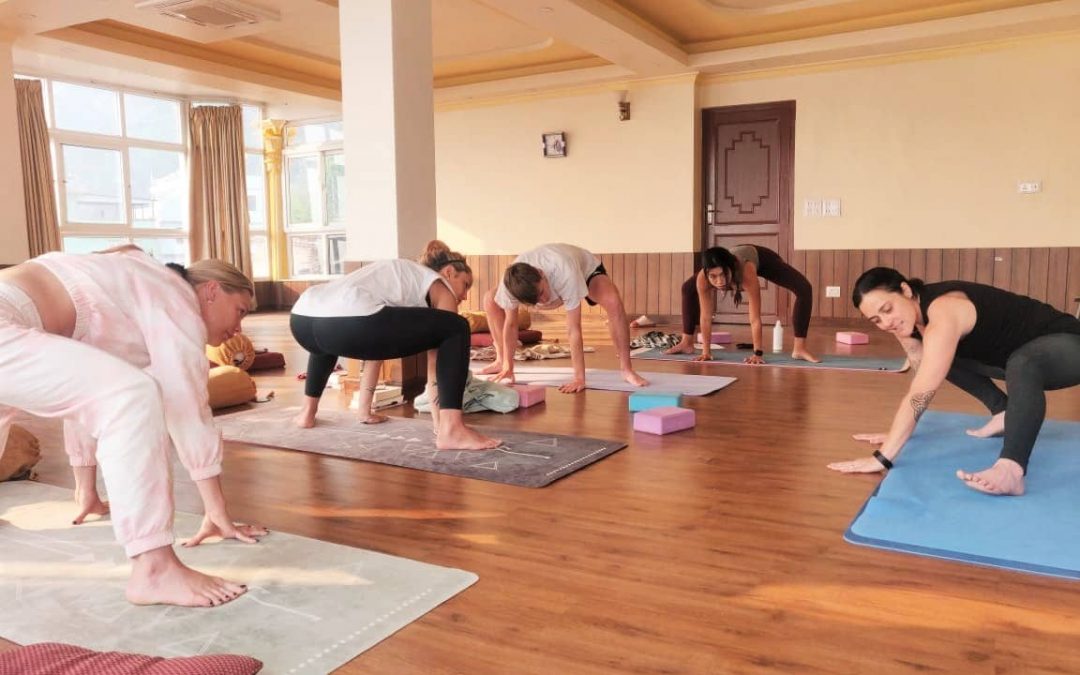
by Tirtha Acharya | May 25, 2021 | Yoga
What do I need to start practicing yoga?
One of the advantages of practicing yoga is that we do not need practically any material: a good mat with an anti-slip surface, a blanket to cover us during the final relaxation, comfortable clothes and above all a good teacher to guide us at the beginning. If it is true that over time we will be able to practice yoga at home without the need for someone to guide us or just follow the class through the many online yoga videos on the net, in the first years the figure is almost essential for the teacher who accompanies us in learning Yoga gradually to be healthy and fit.
To start practicing yoga and become aware of our body through the postures (asanas) and sequences (vinyasa-yoga-sequence) it will always be easier if we start with those simpler postures that require less effort on our part and with which it is us easier to pay more attention to our body and breathing. A good teacher will guide us over time to advance in the knowledge of this practice, correcting our body in each posture and giving fluidity to the transition between postures.
To start practicing yoga with a teacher also has the advantage that it will clarify which postures are counterproductive if we have some type of specific injury. Both at home and in a Yoga school, the practice of yoga directed by the voice of another person, in addition to allowing the order of postures and sequences to have a logic depending on the objective pursued in that session will also help us to provide attention solely and exclusively to our breathing.
Tips and mistakes to avoid when you start practicing Yoga
- You don’t want to rush. Yoga is not a run of 100 m smooth, rather it resembles the preparation of a long distance race, you have to be patient and go little by little, know your body and its response to each posture or sequence has a process and some times that we must respect.
- Thinking that if I am not flexible I will not be able to do yoga is a very common mistake when we start. Flexibility and strength are gained over time and depend in part on each one, do not try to go beyond what your body allows you to abruptly. Yoga should help you to know your body, its limitations and how to go further, but always gradually.
- Losing concentration very quickly or not being able to disconnect the mind is normal at first. Like elasticity or strength, we must train concentration and the way to do this is breathing. Focus your mind and your attention on the breath as much as possible and it will be easier for you to have the concentration necessary to correctly perform each pose.
- Being injured and not telling your teacher is another very common mistake when you start practicing yoga. If you have back, knee, cervical or any other injury, tell your yoga teacher and he will recommend which postures are adequate, counterproductive, which others can help you improve that injury or which you should do with greater caution.
- Use your breath as a means of concentrating and avoiding thoughts. Breathe only through your nose getting used to doing it slowly and accompanying the movements with the exhalation or inhalation as required by each posture or asana.
- Start sessions abruptly. The beginning of practicing yoga sessions should gradually prepare the body and mind to withstand greater stresses and efforts. The initial postures and sequences should be able to awaken our body, leaving it ready to perform postures or asanas that require greater physical requirements and therefore greater concentration.
- Enjoy the ultimate relaxation. The moment of relaxation at the end of the practicing yoga or yoga class is essential to complete the awareness of our body and necessary to recognize how the sequences and postures have influenced it.
How to practice yoga at home?
Tips for beginner to practice yoga at home, although at first glance it seems extremely easy since it does not require apparatus or practically space, it requires taking into consideration some key aspects to be effective:
- Find a quiet place for practicing yoga where you do not have external stimuli that prevent you from focusing on the practice, help yourself if necessary with quiet music and soft light.
- Define in advance the session to be carried out, both in time and in physical demand. Each moment of the day may require a different yoga session. Trying to perform activation sessions at the beginning of the day and relaxation sessions before going to sleep and you will see how the body assimilates the same posture differently depending on the intensity with which we do it and the sequence where it has been included.
- Even if you are no longer a beginner in practicing yoga and unless you have the whole session memorized and internalized, look in voice recordings or online videos for a way in which the session is directed. A session guided by the voice of another person will help you to focus solely on the posture and you will avoid breaking the thread of the sequences if you do not remember part of the session.
- Choose a time of day in which you have enough time to enjoy the session, if we are in a hurry to finish or immediately after we have to do something urgently, it will be very difficult to achieve the necessary concentration to carry out the session correctly.
- Start with short sessions that include sequences and poses that you already know or have practiced in guided classes.
- Do not focus all the practice on your body, be aware that the mind and breath are fundamental parts when practicing yoga.
- You can increase the duration of the sessions by lengthening the time in which you remain in each position and/or repeating the sequences several times at the beginning of practicing yoga.
Author Selena is a blogger and a guest contributor
for a well-known brand that includes
MESHEBLE. In her leisure time, she plays tennis.
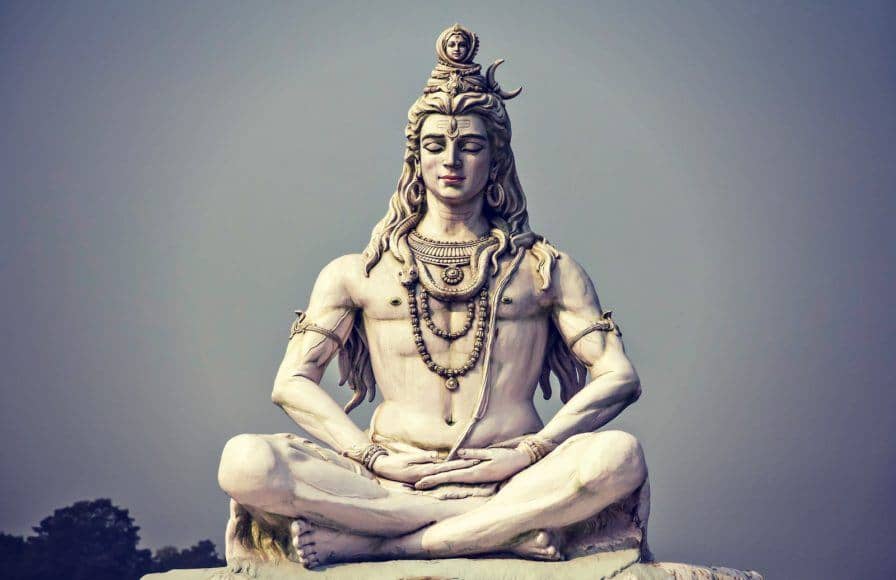
by Tirtha Acharya | Apr 30, 2021 | Yoga
Lord Shiva-The founder of Yoga and his depth in spiritual Knowledge
Lord shiva (known as the founder of yoga) is one of the trinities of Hindu mythology aside from Brahma and Vishnu. Among the trinity Lord Shiva is called as the destroyer as his duty to the universe is to destroy it. When the universe completes its life lord shiva destroys the universe so that new life can be created from there.
Shiva has the companionship of Goddess Parvati. Lord shiva and goddess Parvati lives on Mt. Kailash and have Lord Ganesh and Lord Kumar Kartikaya as the children.
Aside from having the duty to destroy the universe Lord Shiva have many tasks to the world. Shiva is also called as the god of dance as well as the founder of yoga. He also destroys the evil demons and evil doers who hampers the delicate balance of the universe.
In Hindu mythology the appearance of Lord shiva is depicted as a tall male with a third eye in forehead. He has long hair with half cresent moon in it and from the hair’s goddess ganga originates. He wears tiger and elephant skin as clothes, wears snake in neck as ornaments. He decorates his body by the ashes, wields the weapon Trishul in one hand and wields damaru in other. His rides an old ox to travel which name is Nandi.
Origin of yoga
Legend says that Shiva is the one who created yoga. The founder of Yoga is said to be aadi-yogi (Yogic name of lord shiva), the creation or practice of yogi hence the name Yoga. There are many stories of how the teachings of Yoga is spread through the world which lincludes many other gods and goddesd like Macchindra nath, Gorakhnath, Goddess Parvati. However, in every version Lord shiva or Aadi-yogi is the creator and is transferred through the medium of saptarishis.
According to the legends, Yoga was created by god Shiva thousands of year ago. When he invented and was practicing yoga people used to see him perform various activities. Sometimes he was medatiting in complete stillness, sometimes dancing with extremely high energy and sometimes staying in various poses for long times.
Seven men were very enchanted by the activities of god shiva (The Founder of Yoga) and approached him with the wish of learning what he was doing. On the day of Purnima (full moon) Lord shiva decided to become the teacher of those seven men. Hence he became the first teacher of the world Aadi-guru. Gurupurnima is celebrated every year celebrating the teachers in the life started from aadi-guru.
When the teaching was completed the seven men were called saptarishis, completely enlightened heavenly sages. It is also said that each aspect of yoga was put inside each of these heavenly sages by lord shiva.Hence, the seven distinct form of Yoga. After getting enlightment from god shiva, the sages were tasked to distribute their knowledge and enlighten the world.
Spiritual depth of Lord Shiva
Lord shiva is the creator or founder of Yoga, meditation and spirituality. Hence in the entire creation, there is no other living or non living, alive or dead, man or god who has more spiritual Knowledge than Shiva.
Commonly Shiva is depicted as a medicating man, however there is so much more to lord shiva than just that. Shiva exists in 3 states:
1) Nirgun: It is the formless state of Shiva. In this he is the whole universe. He exists every where as well as no where in the same time.
2) Sagun: In sagun state shiva exists in every thing. Every life has part of lord hiva in him. From humans to trees, amnilas to ocean creatires . Everyone has shiva in them.
3) Nirgun-sagun: In Nirgun- sagun form lord shiva is worshipped as Shivalinga.
Not a creation or part of universe but Lord shiva is the universe itself. He is a complete being who has reached complete spiritual depth. Yoga, mediation, Veda are his gift to the world so that other’s can also gain the true spiritaul depth.
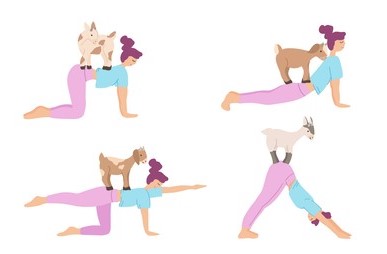
by Tirtha Acharya | Apr 25, 2021 | Yoga
Goat Yoga- Procedure and Benefits of It
The term Goat Yoga is very new to the world. Some of us are hearing it for the first time in our life. We all have heard about yoga, little or more know about it benefits but What is Goat Yoga?
Caprine vinyasa, or goat yoga was originated on a farm located at Oregon in 2016 A.D. The owner of the farm Lainey Morse founded the bizarre and awesome form of yoga. According to the creator of the technique it was completely accidental that she invented it. Morse was dealing with depression after dealing with divorce and her auto immune disease diagnosis.
During her battle with depression, she found comfort in spending time with her goats. After her new find ease to the pain, she invited some of her friends to the farm to try it and one of the friends happened to be a yoga instructor. The yoga instructor then suggested Morse to conduct yoga classes in the farm with goats in it. One after another spontaneous event occurred after this and Goat yoga with its amazing results came in the view of the world.
The Goat yoga procedure
Goat yoga is very simple. You just carry out your everyday yoga session with some goats in it. The procedure is amazingly simple but have tremendous positive effects in you. However, the procedure may be simple but there are lots in consideration to do a Goat yoga.
The size of the Goat
The Goat size that will aid to perform a Goat yoga is one of the most important aspects to be considered. The Goats should be small as big goats can hit you with their horns and can injure when you are performing your yoga posture. Another important thing for which goat age should be considered is that they can jump in your back and can injure you during your yoga session.
The hygiene
How much cute they may be goats in the end are animals, they do not understand manners and hygiene. The goats might pee and poo in your mats or the surrounding. So, the area needs to be continuously disinfected and sanitized after the session.
Animal friendly
The most important thing considered during your session is that no harm should come to your yoga companion goats.
Advantages of Goat Yoga
Stress release
It has been found in many studies that being with animals in a natural environment highly reduces the stress. A normal yoga routine also reduces stress and enhance the performance but introduce a goat in that yoga it boosts stress reduction, improve mental health, and further enhances the performance.
Good yoga companion
A goat is a good yoga companion for you. During the whole session it will keep you occupied and will not let you feel alone. Goats are very playful animal that continuously shows high mobility. It will sleep in your lap jump in your spine but will not ever leave you alone.
No Prior training
Goat yoga is performed to reduce stress, evade loneliness, tackle depression, it is amazing. However more amazing thing is that you do not need any prior yoga training to do goat yoga. You can decide and immediately start your goat yoga.
Play with Baby goats
If you have goat yoga you can play with adorable baby goats. They are one of the cutest things in the world. They are cute, small and will hop around you a lot. Spending times with baby goat will decrease your stress, give a break from your mundane routine if you have one. It will help you to focus the positive aspects in your life.
Due to the positive aspects, easy to do and acting as a new trend goat yoga is gaining famous day by day. The practice of using cats and puppies instead of goats are also somewhat popular.
The people who have experienced goat yoga has said it is very relaxing to feel some small cuties jumping in the back. The hooves running at the spine can also act as a massage to your body.
The main reason goat yoga is gaining so much popularity is its bizarre premise and surprisingly amazing results from that premise. The premise alone is enough to raise the curiosity of the people and try once to see the benefits.
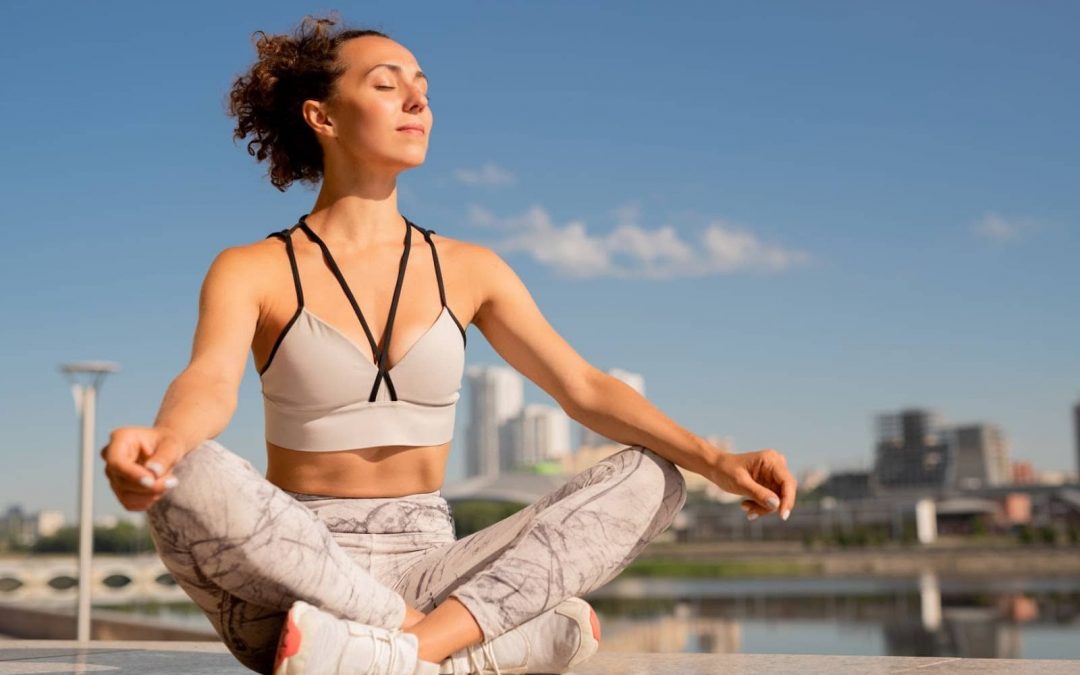
by Tirtha Acharya | Apr 15, 2021 | Yoga
Mindful Eating Before and After Your Yoga Practice
Yoga is all about finding balance in the mind and body- learning how to find stability and inner peace. When you look at it that way, learning mindful eating should be a big part of your yoga practice. But for many yogis, healthy eating often gets pushed to the back burner.
If you often find yourself grabbing a lot of take-out, eating while you’re on the go, or mindlessly forking down your food while you stare at the screen on your phone or laptop, you’re not alone. Even though many of us practice yoga regularly, we’re often too busy to think about what we’re putting into our bodies throughout the day, much less before and after practice.
But, one of the most wonderful things about yoga is that it strengthens our connection to our bodies. Learning to listen to your body before and after class can help you determine what to eat and when. You can learn to trust your body’s inner wisdom to help you eat consciously… you just have to take the time to listen.
What works best for one person may be completely different from what works for you. But the following guidelines will give you a solid foundation in developing mindful eating habits that will support your yoga practice.
Mindful Eating Before Yoga Practice
Nutrition is a key component of integrative medicine programs, according to experts in the field, because much like yoga, it plays a major role in both your mental and physical health. Choosing a nutritious meal or snack before practice will improve your mental focus and make it easier for you to concentrate.
That said, be sure to choose food that’s easy to digest. Try to allow at least two hours to digest a meal and an hour to an hour and a half to digest a snack. Pick foods that give you an energy boost without leaving you feeling weighed down or bloated.
Remember, the most important thing is to listen to your body and do some experimenting to determine what and when works best for your body. The last thing you want is to become light-headed during class or be distracted by hunger.
Most importantly, pay attention to how you feel during class and note what and when you ate beforehand. Make adjustments until you find what works best for you. Here are some ideas to help you get started
Energizing Snacks with Healthy Fats and Protein
Healthy fats and protein are a great choice for when you’re heading into a particularly long or demanding class, or for those days when you feel like your energy levels are low. They’ll give you that energy and staying power you need to perform at your best. Some good options are a smoothie with a scoop of protein powder, whole grain toast with avocado, or a piece of fresh fruit with some nut butter.
Simple Carbs and Fiber
Simple carbs are a great choice for those times when you need a quick boost of energy. Adding a bit of fiber to your snack will help your energy boost last longer. Some great options in this category include hummus with veggies and/or whole-grain crackers, avocado on whole-grain toast, or an apple with peanut butter.
Eat a Full Meal Two Hours Before Class
For some people, a light snack shortly before class may leave them feeling too full. Or, it might not give them enough fuel to perform at their best. If that sounds like you, you might want to try eating a full meal about two hours before class by using the principle of mindful eating. This will give your body enough time to digest your meal, while still providing it with the fuel it needs to keep you focused and energized throughout your class.
Avoid Spicy, Acidic, or Fatty Foods
Stay away from spicy, acidic, and fatty foods before yoga practice. These foods take a longer time to digest and they can upset your stomach. This could leave you feeling uncomfortable and affect your ability to focus during class.
Some Good Options for On-the-Go
If you’re in a rush or on the go, some other good options to consider before practice include granola/protein/energy bars, protein shakes, or nuts.
Drink Water
You should also ensure that your body is well hydrated before class. However, you definitely don’t want to go into class with a tummy full of water. Drink small amounts of water regularly throughout the hours leading up to class, but don’t overdo it.
What to Eat After Yoga Practice with Mindful Eating
After yoga practice, you want a meal or snack that will help your body refuel. Complex carbs, healthy fats, and protein can all be good options. Here are some suggestions:
Protein plus Carbs
After a vigorous yoga class, your body will need fuel to get your energy levels back up. Try a healthy meal or snack that has a 3 to 1 ratio of complex carbs to protein. This combo will restore your energy levels while supporting muscle repair. Some good snack options are a quinoa bowl with legumes and tofu, a smoothie with fruit and silken tofu, or Greek yogurt with fruit, granola, and chopped nuts.
Re-Hydrate
If you take the time to listen, you’ll probably find that your body is screaming for hydration after class. Drinking water is a great start, but you can also try hydrating foods like fresh fruits and veggies. Coconut water and bananas are both great for replacing electrolytes because they contain potassium. Getting your body re-hydrated is key for overcoming mental and physical fatigue and helping your body recover.
Wrapping Up of Mindful Eating
Remember, these are only suggestions. You are the one who lives in your body, so only you can determine what makes you feel the best.
And, if you normally practice first thing in the morning, you may not want anything in your stomach at all. On the other hand, if you practice late in the day, you might need that meal or snack to get you through.
One thing is for sure, mindful eating before and after yoga practice will help be in the right place, mentally and physically, to perform at your best during practice. There’s no question that yoga is incredibly rewarding, but it’s also challenging, so you need to give your body the fuel it needs.
Nicole McCray
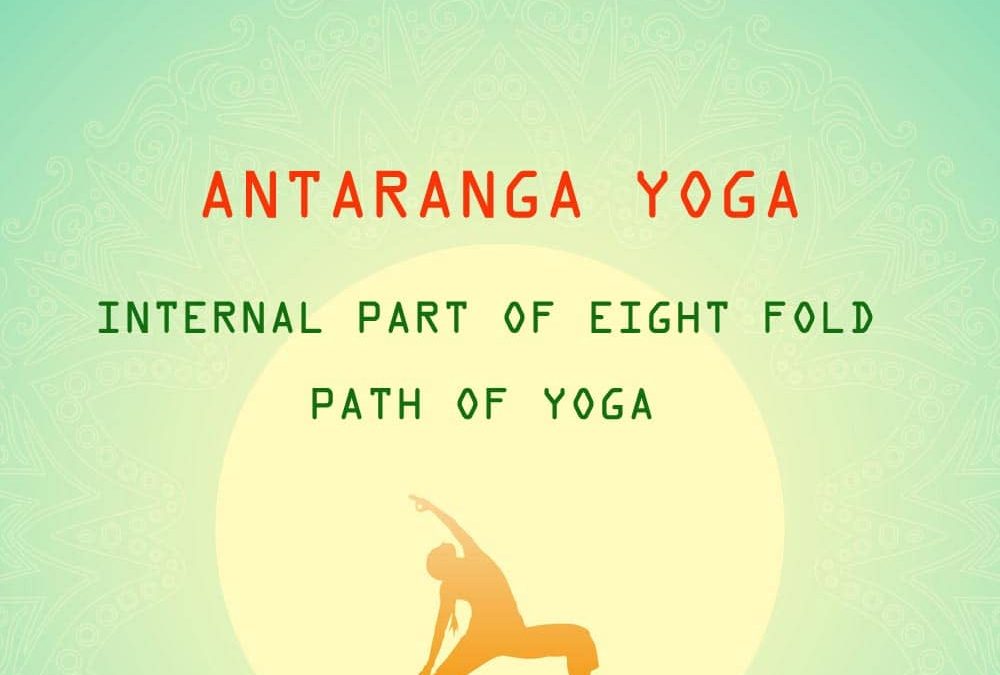
by Tirtha Acharya | Apr 5, 2021 | Yoga
Antaranga yoga
Yoga is an ancient practice that dates back thousands of years. It is not only a means of stretching and breathing but on the contrary, it has historical and ancient roots. Over time, numerous acclaimed priests have given meaning to yoga. The profound name in yoga is Sage Patanjali and he’s the man behind ‘Ashtanga yoga’. The Antaranga yoga is a vital component of his teachings and here, we shall discuss them.
1. THE YOGA THAT WE KNOW
Modern-day yoga is more about breathing and stretching rather than linking oneself with the supreme being. Although this might not always be the case, the objective of yoga was always to feel eternal bliss. There are various forms of yoga that you can use to achieve your said target. Readers may be confused as to which yoga they should practice but fret not as we shall discuss it some other day.
2. TYPES OF YOGA
- Vinyasa: A method of vinyasa yoga that involves focusing on connections and transition among poses.
- Ashtanga: A thorough method that focuses on mental fortitude, ethics, and breath.
- Restorative: Deals with relaxing and stretching
- Hatha: Slow movement through the asanas.
- many others are introduced
There are other forms of yoga too. You might be asking where is antaranga yoga? Well, you’ll find out eventually so keep reading!
3. WHAT IS ASHTANGA YOGA?
The word ‘Ashtanga’ means eight limbs in Sanskrit. Speaking specifically, it refers to the eight limbs of yoga. These eight limbs act as a sequence that connects the inner and outer aspects of the human body and mind. Some people believe that if one follows the eight limbs, then he can live a life with meaning. The eight limbs of yoga are listed as below:
- Yamas: focuses on behavioral aspects
- Niyamas: focuses on behavioral restraints
- Asanas: focuses on physical postures
- Pranayama: focuses on breathing techniques
- Pratyahara: focuses on withdrawing the senses
- Dharana: focuses on concentration
- Dhyan: focuses on meditation
- Samadhi: focuses on transcendence
The last three aspects of Ashtanga yoga, “Dharana, Dhyan, and Samadhi’ are collectively called Antaranga yoga. They have an important role to play in the yoga cycle.
4. HOW DID ASHTANGA YOGA BEGIN?
The irrefutable fact is that ashtanga yoga originated from Patanjali, but through the years, many yogis have made valuable contributions to it. K. Pattabhi Jois is another famous name in the yoga world. He was a student of T. Krishnamacharya and studied under his guidance at the College of Maharaja in Mysore, India. The crux of their subject matter was ‘Yoga Korunta’ which is an ancient relic.
Many historians believe that the ‘Yoga korunta’ was written by Vamana Risi. The sage wrote this text with the motive to guide the human population from a path of wrongdoings. K. Pattabhi Jois learned many secrets from his teacher including antaranga yoga.
5. COMPONENTS OF ANTARANGA YOGA
The sixth component of Ashtanga yoga dwells on concentration. Concentrating is a difficult task and it is easier said than done. In this practice, yogis learn how to keep their thinking process in check and epitomize all their power. This power, on the other hand, is placed on a single object, or, thought. Once we learn to focus on one thing, it transcends to meditation. Similarly, it will help us in other endeavors as well.
Another component of Antaranga yogais dhyana. In this aspect, the core objective is to maintain prolonged periods of concentration. You may find the terms Dharana and dhyana synonymous, but there is a fine demarcation line. While Dharana focuses on concentrating on one thing only, dhyana involves awareness plus focus. To reach this stage requires unbridled attention and grit. Make sure that you practice well to reach this stage.
Samadhi is the final aspect of ashtanga yoga and it is often known as the state of ecstasy. In this stage, the yogi joins himself with the celestial being and gains the ability of eternal peace and understanding. The idea of eternal peace may seem a bit far-fetched now but there were times when it was possible. There are numerous doubts as to what it is and what it isn’t. The only way you can find out is by practicing yourself.
Thus, these were the components of antaranga yoga and we hope that we managed to grow your interest in yoga.
You may like Bahiranga yoga in details where you can read about what actually Bahiranga yoga is.








